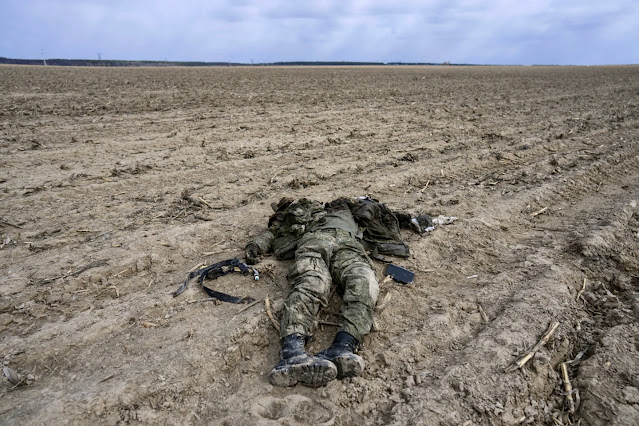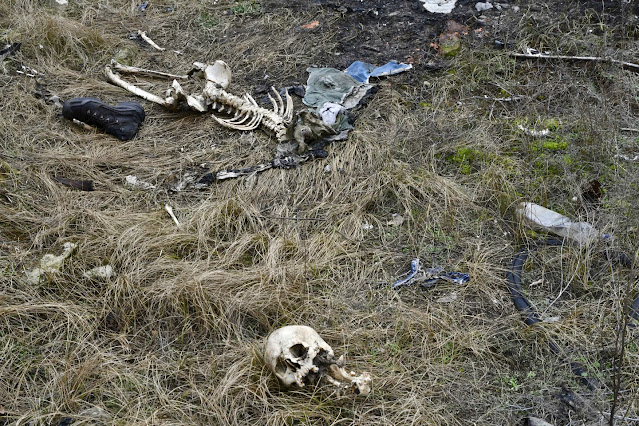During the first Chechen conflict, a Chechen woman was shot dead by Russian troops on a street in the capital Grozny. Russian troops massacred the Chechen woman by shooting her mercilessly. Her cat watched by her side over the woman's bloody corpse.
The First Chechen Conflict was a conflict in which Russia, after the collapse of the Soviet Union, suppressed the Chechen independence movement from December 11, 1994 to August 31, 1996. The first conflict ended in a humiliating defeat for Russian forces, and Chechnya was devastated. The Chechen Republic, with a population of approximately 1.05 million, suffered between 40,000 and 80,000 deaths, 200,000 injuries, and hundreds of thousands of people became migrants and refugees. Cities, towns, and villages disappeared, and Chechen citizens were subjected to widespread atrocities by Russian troops and Chechen rebels and armed factions. The majority of Grozny's Chechen population fled to the countryside where they could connect with their families, leaving the mainly ethnic Russian population in the city with nowhere to go.
The first Chechen conflict was a result of the instability that followed the collapse of the Soviet Union, and the ethnic minority ethnic republics claimed their independence. In Chechnya, the Soviet Union deported large numbers of Chechens to Central Asia in 1943 and 1944. Former Soviet Air Force General Dzhokhar Dudaev seized power and declared the Chechen Republic independent in 1991. When the Chechen government failed to comply with President Yeltsin's ultimatum of November 29, 1994, Russian forces were ordered to retake Chechnya. The first Chechen conflict began on December 11, 1994, with a Russian military bombing campaign that attacked towns and cities in the region.
In the first phase of the conflict, approximately 25,000 Russian troops invaded Chechnya on December 11, 1994, from three sides. Russian troops encountered ambushes and tactical retreats by Chechen forces in mountainous and forested areas. It took until December 25 to reach the capital, Grozny. The Russians proceeded to Grozny on New Year's Eve in a disastrous abbreviation. The Russians were decimated as soon as they entered the city, killing or wounding approximately 2,000 people in about 60 hours. Russian units were abandoned during the retreat.
The Russians struck again at Grozny in January 1995 with a force of about 40,000 men. Airstrikes and artillery systematically destroyed Grozny district by district, and the Russian invasion was delayed after the artillery bombardment began on January 4. Chechen insurgents used urban guerrilla tactics, with small units moving out of their bunkers to ambush Russian troops. It took until February 8 to drive the last Chechen fighters out of the city. In Grozny alone, some 27,000 civilians were killed during the nearly five-week conflict, representing about 6% of the total civilian population.
Russian troops invaded throughout Chechnya, systematically obliterating towns and villages; by April 1995, about 90% of Chechnya was under Russian control. In the conquered territory, atrocities were committed by Russian Interior Ministry MVD units in an operation to cleanse villages of suspected insurgents and rebel supporters. Concentration camps were established and civilians were held in mass detention, along with widespread abuses.
In June 1995, a terrorist group from the Chechen Republic took over a hospital in neighboring Budyonovsk and took approximately 1,500 hostages. Multiple attempts by Russian forces to storm the hospital failed, and approximately 150 hostages were killed. A negotiated cease-fire was agreed upon, ending the first conflict. The Chechen insurgency ended the ceasefire in October 1995 and began a second insurgency phase. Russian forces were subjected to Chechen guerrilla attacks, and the majority of Russian military casualties occurred during this phase. The Russians were on the defensive and could no longer make frequent use of their heavy bombing strategy. Concentration camps and cleansing operations continued. The Russian media broadcast grisly images of the conflict after the collapse of the Soviet Union, rapidly turning Russian public opinion against the war.
On August 6, 1996, 1,500 Chechen fighters infiltrated Grozny and launched a daring Chechen raid on Grozny, a surprise attack on a Russian garrison of about 12,000 men. The Russian troops were driven into isolated groups, and the Chechen numbers were quickly augmented by reinforcements who had set up an effective defensive position. After the Russian counterattack was repulsed, the Russians surrounded the city and on August 19 gave the Chechens a 48-hour ultimatum to leave the city. The approximately 300,000 trapped civilians were in a state of panic, and on August 20 artillery fire began, hitting many of the fleeing civilians. Russian forces were ordered to withdraw from Chechnya on August 22, 1996, suffering a painful defeat; by August 31, the Hasav-Yurt Agreement was signed, formally withdrawing Russian troops and recognizing Chechnya's de facto independence.





























